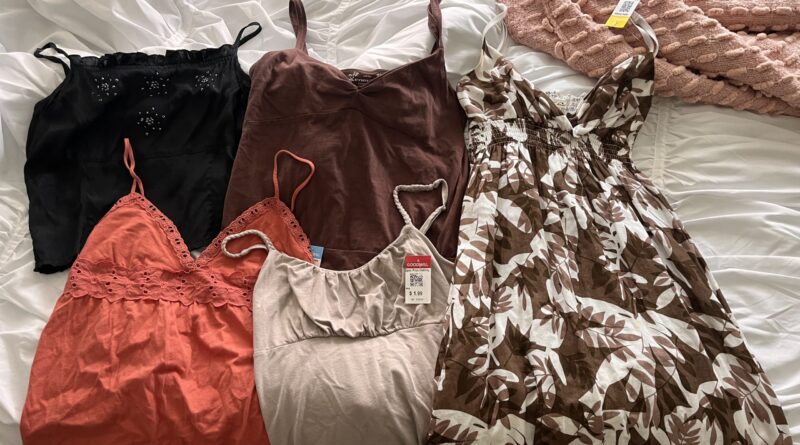Freedom to Roam: Sustainable Style
It is often said that when you look better, you feel better; I’m a strong believer that when you feel better, you also perform better. A new outfit or daring accessory can be a great way to get that boost of confidence, but the revolving door of fast fashion has resulted in overconsumption hitting new highs. It can sometimes feel like you have to choose between being fashionable or sustainable, but there is a facet of the industry helping to combat this.
Thrift shopping is by no means a new enterprise but was popularized in recent years as Generation Z began to integrate alternative fashion into the mainstream. Thrift hauls, “get ready with me” videos, or “GRWMs,” and trips to the bins are all terms any teen or young adult is probably familiar with, thanks to the proliferation of these trends on social media.
While this uptick in secondhand shopping has been somewhat controversial, with some people arguing that the popularization of thrifting negates the purpose of the store’s existence in the first place, the fad has helped to overcome some of the stereotypes that exist around buying secondhand clothing—like that the clothes are all inherently dirty and cheap.
Josh Cornell (‘26) found some of his most prized styling pieces at secondhand stores after he started thrifting during his first year at MC.
“It was kind of a joke with my friends,” Cornell said. “They were like, ‘we need to fix your wardrobe,’…but I really had a fun time with it because I liked all the old stuff I found.”
Vintage shopping can be a bank-breaker, but for shoppers with a keen eye and a gift for finding hidden gems, thrift stores are an opportunity to find antique fashion at yard sale prices. Cornell said that the thrift find he is the most proud of was a signed Aerosmith tee from their 1997 Nine Lives tour.
“I eventually got rid of it because it didn’t fit me well anymore, but I’m sure it’s out there finding a new home,” said Cornell. This cycle is another important aspect of sustainable fashion: wear your clothes until you can’t wear them anymore. Maryville College students familiar with Mountain Challenge may recognize this philosophy as part of their “Go Towards the Green” initiative, which encourages individuals to make more thoughtful decisions about their consumption habits.
According to the Mountain Challenge website, “We can urge people to buy used clothing as far as possible. And, like food, we can work to know where our clothes come from and how they are made. We can also work hard to keep our clothes in play as long as possible. After all, that worn pair of jeans is more a friend with stories and memories than just a pair of pants. Patched clothing can be a symbol of friendship and true ownership. We can also provide the patches.”
Buying clothes from Goodwill or Karm doesn’t have to feel restrictive; in fact, buying used clothes can be freeing when you realize that your sense of style doesn’t have to be influenced by what the store mannequin is sporting, or by the strategic department store arrangement. Taking the time to comb through disorganized but overflowing clothing racks is not only fulfilling but also rewarding. And once you’ve found an article of clothing you love, wear it until you can’t wear it anymore– or donate it back to a thrift store to continue the cycle and keep it out of the landfill.
Whether you need to find that perfect look to make them miss you or to help you walk into that interview with your head held high, try scoping out a few secondhand shops before running to a department store. Josh Cornell has just one request for anyone partaking in thrift culture: stop gatekeeping!

